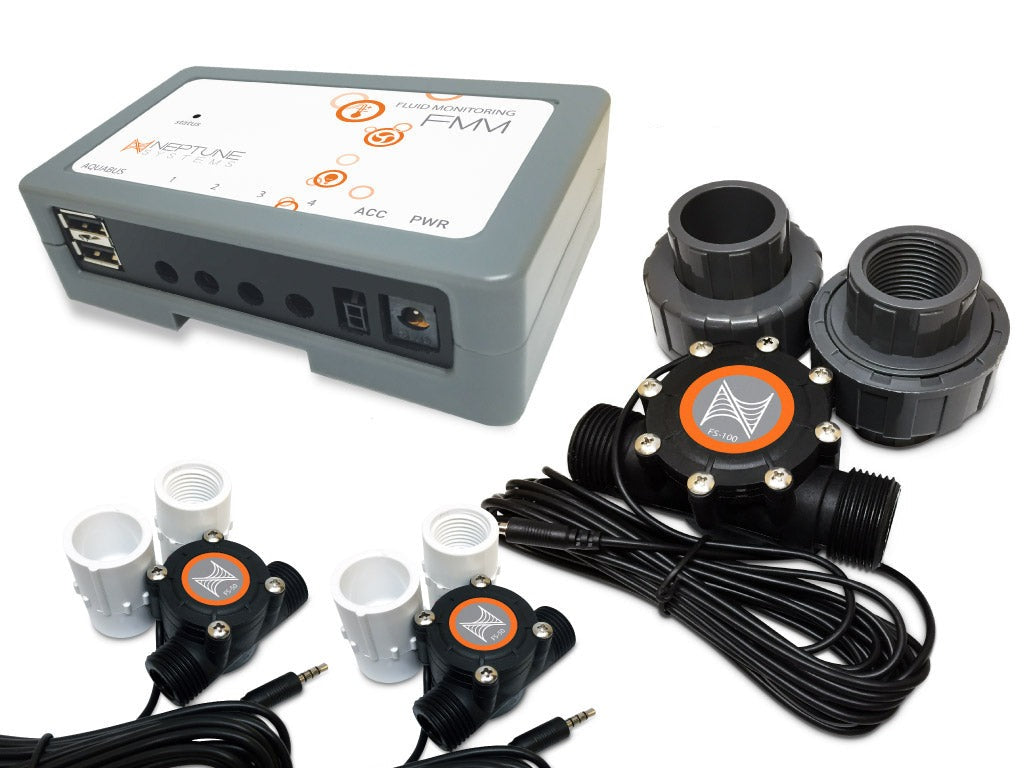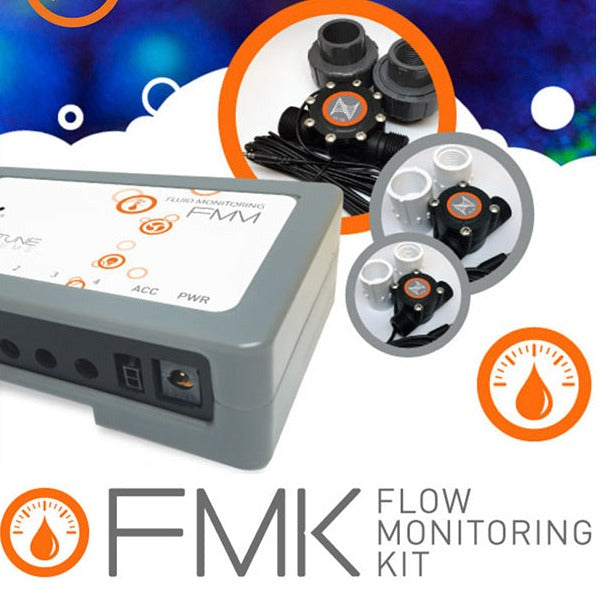
Neptune Apex Flow Monitoring Kit - FMK
SKU: FMK
by Neptune
Sale
Original Price
$311.99
Current Price
$280.79 CAD
Special 10% price match offer for this Neptune product! If you find a lower price in Canada, we'll match it plus give you an extra 10% of the difference. To qualify, the competitor's price must be less than a 2% difference, and the item must be in stock. Refer to our price match policy for complete details. Shop confidently with us!
START MONITORING FLOW IN YOUR AQUARIUM!
THIS KIT INCLUDES:
FMM - FLUID MONITORING MODULE
1'' FLOW SENSOR (FS-100)
TWO 1/2'' FLOW SENSORS (FS-50)
TWO 1'' UNIONS
FOUR 1/2'' ADAPTERS
FMM - FLUID MONITORING MODULE
The FMM (Fluid Monitoring Module) is a module that connects to any Apex (Apex(2016), Apex Classic, Apex Lite, Apex Jr.) via it’s AquaBus port providing four multi-function monitoring ports that can be used for flow sensors, water-level sensors, leak detections sensors and possibly future products as well.
WORKS WITH ALL APEX MODELS!
That’s right, whether you have the new Apex, Apex Classic, Apex Lite, or Apex Jr., they all will work with the FMK!
FMM – FLUID MONITORING MODULE
IT DOES SO MUCH!
The FMM (Fluid Monitoring Module) is a multi-purpose module that, with the help of various accessories, enables your Apex to do:
Flow Monitoring
Leak Detection
Water Level Detection
Power 24VDC accessories
Future sensors
FLOW SENSORS
Return pump
Measuring the flow of your aquarium’s main return pump is an incredibly useful piece of information. The key benefit would be to have the Apex notify you the instant the flow stops for any reason — usually the result of a failed or faulty pump. Furthermore, an indication of a reduced flow rate could be used to determine that the pump or the lines are dirty or are becoming clogged with algae, debris, animals, or the growth of organisms inside your plumbing.
Auxiliary pumps on reactors and the like
This is a very handy application for the FMM. Place a flow sensor on a device like a carbon/gfo/biopellet reactor and it serves many purposes. First off, you will know if your pump is not not flowing correctly or failed altogether. Next, you can easily fine-tune the flow into the reactor by watching the dashboard tile on your Apex. Finally, you can know when the reactor is becoming clogged with detritus or possibly channeling has occurred by an alert on your Apex or by monitoring your dashboard.
Put a flow sensor inline to your device, plug it in to the FMM, and see exactly the flow rate of the water (any aquarium fluid really) going through that sensor. The industrial-grade flow sensors use either a turbine or paddle-wheel mechanism (depending on the model) to measure the flow.
It is important to note that the flow rate that will be reported back to you from the flow sensors will likely be far lower than you expect or what is printed on the pump label or documentation. This is due to head pressure loss from physical height differences, long runs, restrictions such as ball valves, fittings like elbows, tees, and reducers, and then finally the loc-line many use as the entry point into their tanks. As an example, a pump rated at 3200gph will likely be showing less than half that amount in nearly all applications.
OPTICAL WATER-LEVEL SENSOR (OPTIONAL)
There are many useful purposes for water-level sensors on an aquarium. They can help you build an auto-top-off, monitor the levels in your supplement containers, even help automate saltwater mixing containers. Traditionally float switches have been the most commonly used types of these devices, however they are prone to all kinds of failure. On the other hand, the solid-state, optically-controlled sensors used with the FMM are much more reliable and dependable.
These optical sensors work by using an LED emitter and receptor in a clear enclosure such that when it becomes wet, the light bends and no longer completes the circuit.
Easy to use
Of course you could always add water-level sensors to your Apex – but it was more complicated than most users could handle. Now, with the FMM and these optical water-level sensors, you just plug them in! No wire-stripping, no breakout box necessary!


